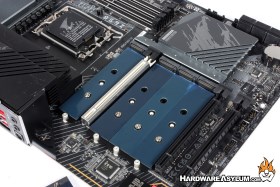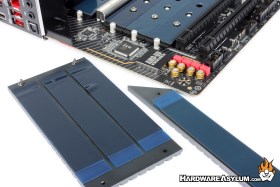Aorus Z690 Pro Motherboard Review
Author: Dennis GarciaBoard Layout and Features Continued
Dual channel memory comes standard on the Alder Lake processor and the Z690 Aorus Pro supports standard speed DDR5 modules up to and beyond 6200Mhz. Actual speeds will depend on your module choice and processor quality but, be humbled the board can handle it. A maximum of 128GB is addressable with the proper module density.
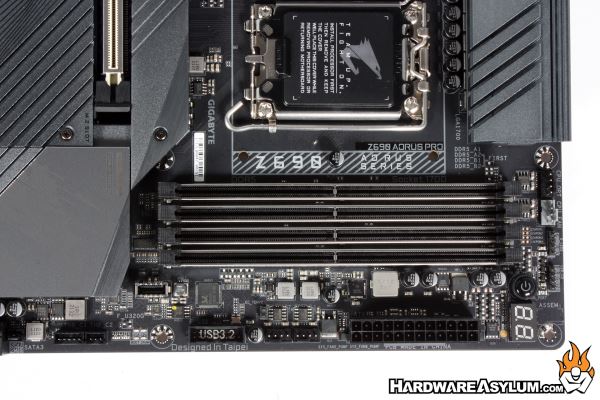
Just about every socket on the Z690 Aorus Pro is metal reinforced with direct solder connections to the PCB for the maximum strength. In addition to twisting and pulling the DIMM sockets also have a crush bar to keep the socket sides from being pushed inwards. These details are very impressive and we can thank consumers for trying to RMA motherboards with socket damage for their prevalence on current designs.
Below the memory sockets you’ll find the onboard bench controls including a power button, and a debug LED. Two of the four RGB headers are also located here for both RGB and ARGB along with four PWM fan headers.
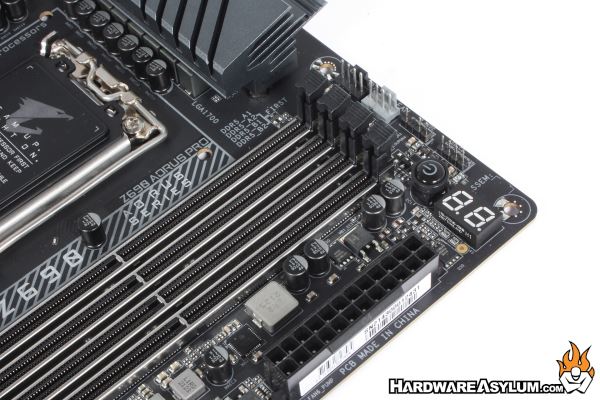
One thing I do like about the Z690 Aorus Pro are the status LEDs indicating which system is currently having issues. Those lights are to the left of the middle mounting hole.
The reset button is located at the bottom of the motherboard and not very well marked next to the SATA connections.
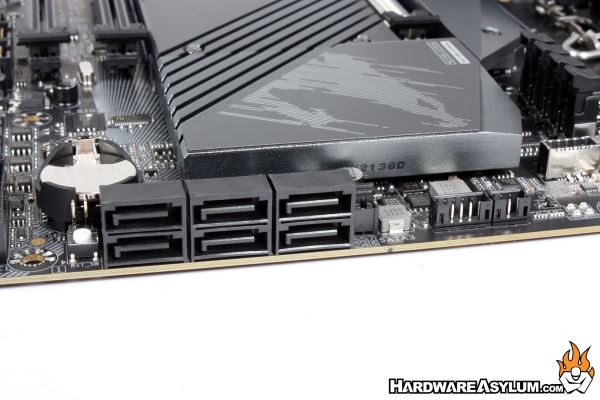
Internal SATA connections number six and follow the new SATA6 connection standard. RAID levels 0, 1, 5 and 10 are supported using the setup wizard in the UEFI BIOS.
One of the biggest shifts when it comes to motherboard design is support for storage. For years storage has been the bottleneck and we have gone to great lengths to ensure that our data access is fast. Well, it would seem that when storage is no longer a bottleneck every motherboard designer finds it necessary to include as many PCI Express enabled M.2 slots as possible.
In the place of the usual PCI Express expansion slots you will find a total of four M.2 sockets all supporting PCI Express 4.0 and cooled by an integrated cooling solution. The top slot is using bandwidth from the CPU while the others interface directly with the SB/MCP. It doesn’t matter which slot you pick unless you are running a mix of M.2 and SATA based drives.

